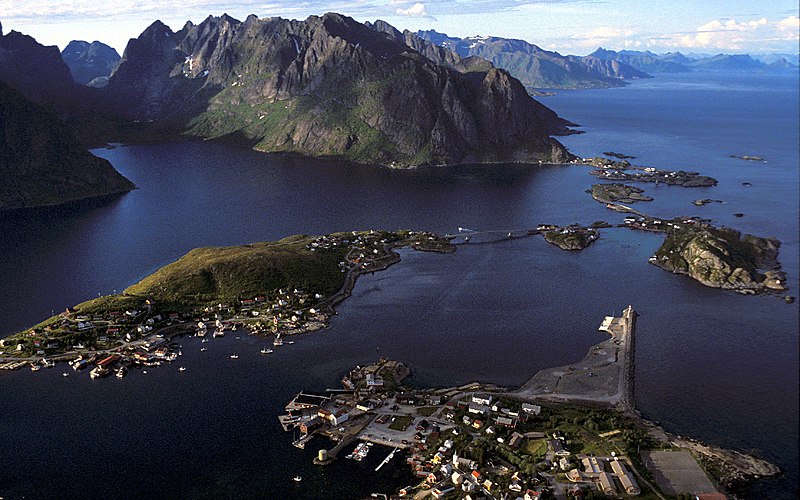In what seemed like an episode of the Norwegian television drama Occupied, Norway’s largest political party joined smaller ones in the nation’s parliament to prevent oil exploration in the scenic Lofoten archipelago. The Labor Party’s environmental wing made climate change and scenic beauty big issues.
Unlike another contentious oil resource, Alaska’s Arctic National Wildlife Refuge, these islands get around 1 million visitors each year. That implies that many Norwegians have actually seen the islands.
In the history of oil-rich nations, Norwegians have followed an unorthodox path. While most such nations have chosen to subsidize domestic prices of petroleum products or at least keep them cheap by policy, Norway has taxed consumption of oil and oil products as if the country were an importer trying to economize on petroleum use.
A recent Bloomberg survey showed that the average price of a gallon of gas worldwide was $3.48. The range was 1 cent in Venezuela to $7.61 in Hong Kong. Norway ranked second highest at $6.89.
Even more strange is that Norway has become a leading market for all-electric cars. About one-third of all new cars sold in the country last year were all-electric. Of course, Norway has very large hydroelectric resources, resources which produced 93.6 percent of the country’s electricity in February 2019, the most recent month for which data is available. But these copious hydropower resources have long been available and didn’t prevent the country from becoming dependent on petroleum-fueled transportation just like the rest of the world.

Norway also made a fateful and propitious decision shortly after the discovery of its oil and natural gas riches in the North Sea. The country decided to invest much of the tax revenue derived from oil and gas in a sovereign wealth fund to be managed on behalf of the Norwegian people for use by future generations. Most oil-rich nations choose to spend their oil wealth as quickly as it comes in. Today, based on current exchange rates, the Norwegian fund has more than $1 trillion invested, making it the largest sovereign wealth fund in the world.
The fund has been used to smooth out government spending at times of low oil prices. Officially, it is a pension fund. But, it has no formal pension obligations. Norway believed at the time of the fund’s formation that the fund would help provide support for pensions to its aging population.
Now, here is one truly astounding recent change to the fund’s investment strategy. The fund will begin phasing out oil and gas exploration and production companies from its portfolio. That still leaves large integrated majors. The ostensible reason for the change is to make the fund “less vulnerable to a permanent drop in oil prices.”
The lure of oil wealth seems irresistible. But here is a country that has avoided most of the traps that come from a bonanza of mineral wealth. By managing its oil wealth for the long term and by keeping domestic fuel prices high in a way that makes electric vehicles attractive, Norway has actually partially prepared itself for a post-oil society.
In fact, Norway has a goal of phasing out all fossil-fueled vehicles by 2025. That will probably not happen on schedule. But the fact that the Norwegians set such a goal tells us that they have a much more mature attitude towards oil than most of the rest of the world.
Those who want to drill in the Lofoten islands say that Norway is forgoing substantial wealth and that the oil under the island chain is needed if Norway is going to arrest the ongoing decline in its oil production. Norway’s oil production (defined as crude including lease condensate) peaked in 1997 at more than 3.1 million barrels per day (mbpd). Production in 2018 slumped to just over 1.5 mbpd.*
But Norway had long planned for the day when its oil production would decline. If only the rest of the world had thought ahead to such a day, we would not be faced with the specter of the inevitable decline in oil production worldwide and no viable plan for coping with it.
________________________________________________
*Norway’s natural gas production, however, reached a record in 2018 of almost 4.4 trillion cubic feet. Norway is Europe’s second largest supplier of natural gas imports (38.8 percent) after Russia (40.6 percent).
Photo: Picture of Reine, Lofoten, Norway. Seen from top of Reinebringen (2003). Photo by Michael Haferkamp. Via Wikimedia Commons https://commons.wikimedia.org/wiki/File:Reine-3.jpg
Map: Lofoten Islands in relation to Norway and Europe. Edited by M.Minderhoud, based on a public domain map. Via Wikimedia Commons https://commons.wikimedia.org/wiki/File:Norway_-_Lofoten.PNG






